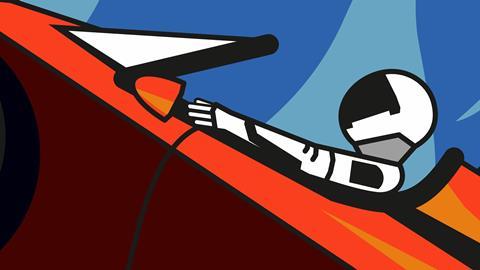A focus on functionality, utility, and efficiency may have produced a long list of recent innovations, but are we exploring the creative potential in new technology?
On the 6th of February 2018, Elon Musk’s SpaceX launched a Tesla Roadster in the direction of Mars on top of his Falcon Heavy rocket with a mannequin in a spacesuit in the driver’s seat and David Bowie’s “Starman” playing on the car radio.

This begs the question, “why?”
I think the answer is, “just because.”
Musk’s Starman heading for Mars has captivated the world’s attention not simply because of the striking images of the Roadster with the Earth in the background, but because of its lack of utility. What problem is it trying to solve?
For better or worse, we currently live in a culture that is focussed on problem solving. Even the corporate cliché, “don’t bring me problems, bring me solutions,” implies that there still is a problem at the heart of the matter.
This focus on utility has even spread to media.
A look at Spotify reveals loads of playlists designed to help you accomplish things – playlists to help you wake up, playlists to help you study, playlists to help you drive, playlists to help you relax, and on and on. Even the playlists designed simply for listening are promoted with the tag, “Play the music you love, without the effort.”
Even listening to your favourite music is treated as a problem that needs to be solved. Where’s the fun in that?
Which brings us back to the Tesla in space. The Falcon Heavy launch was designed to test a number of solutions to problems – how to deliver orbital payloads cheaply, how to reuse launch boosters, how to send a vehicle to Mars – but it was the Starman in a Roadster that captured the imagination of the public.
Why? Because it was fun.
Yes, it demonstrated that the SpaceX technology could deliver a relatively fragile payload into orbit, but that could have been accomplished with some boring, traditional type of scientific test payload. But where’s the fun in that?

It showed the power of image and storytelling. If you’ve ever been in a car, it’s easy to imagine yourself being the driver of that celestial sports car, making it much easier to connect with the whole project, and imagine that Musk’s ambition to send people to Mars is a real possibility.
So, what does this have to do with broadcast engineering? Unfortunately, engineering teams are often nicknamed “The Department of Production Prevention.”
The clichéd (and inaccurate) image of a sandal-wearing, dour, beardy man saying, “you can’t do this,” is a trope of the industry. The very antithesis of fun. The behaviour that leads to this stereotype arises out of the best in intentions, but we all know what road is paved with good intentions.
Broadcast technology has been going through an era of unprecedented change, and its practitioners are experiencing serious change fatigue. People are exhausted, and not only can they not see the light at the end of the tunnel, they’re not sure where the tunnel is.
Since the year 2000, we’ve seen:
- The move from tape to file-based working
- DTV
- DAB
- Widescreen
- The move from CRT to flat panel displays
- The rise of the DVD
- The decline of the DVD
- HD
- Surround sound
- 3G SDI
- The death of 3G SDI
- Analogue switch off
- VOD and OTT services
- The Minidisc
- Digital downloads
- Music streaming services
- 3D TV
- The death of 3D TV
- The use of mobile data for video contribution
- The launch of the first UHD services
- VR
- AR
- The introduction to IP networking as a replacement for baseband
That is a long list of problems to be solved, focussing on functionality, utility, and efficiency.
It can be argued that we’ve seen more change in the past 10 years than we have since the beginning of the broadcast industry. And now, in this software-defined world in which we operate, technology refresh cycles are now calculated in months rather than decades. It’s no wonder we’re fatigued.
Once a new technology has been delivered and snagged, a new technology comes along to take its place. There’s no time to sight back and enjoy the fruits of our labours. There’s no time to explore the possibilities of the new kit. There’s no time for fun.
Which brings us back around to Mr. Musk and his absurdist payload. Launching rockets into outer space is a very serious undertaking involving serious problem solving. A mistake can result in not only the loss of money, but potentially, the loss of life as well.
But it’s also exciting and a testament to the remarkable ingenuity of human beings, and therefore something worth being celebrated. So instead of taking a po-faced approach to the project, Musk had a bit of fun. And by doing so, engaged the imagination of the world.
This is something the broadcasting industry should take to heart. Let’s take time to have fun with all our amazing accomplishments. As a director once said to me, “if we’re not enjoying ourselves, how can we expect the audience to?”
As well as being a music producer and composer, John Maxwell Hobbs is CEO of music technology startup Delic, media consultant and the former Head of Technology at BBC Scotland.




























No comments yet